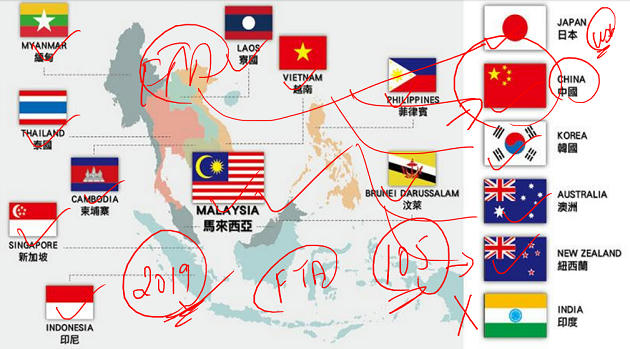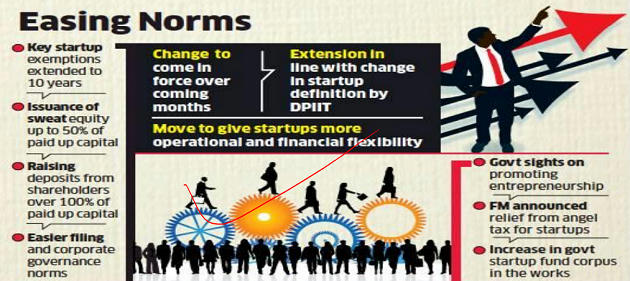Table of Contents
No deal
- India pulled out of RCEP.
- Capping 6 years of talks to clinch the world’s biggest free-trade deal.
- Stiff resistance from domestic industries and political circles.
- Reluctance of partners like China to grant it meaningful concessions despite hard negotiations in recent weeks.

- Vijay Thakur Singh, secretary (east) in the MINISTRY OF EXTERNAL AFFAIRS: RCEP deal, in its current form, would have had “significant issues of core interest impact” on the livelihood of India’s vulnerable sections.
- India would, from now on, generally seek to sign trade pacts with only those countries with which it has trade surplus.
- Former NITI AAYOG vice-chairman Arvind Panagariya said without India, the RCEP isn’t a huge deal, as others already have some kind of agreements among themselves.
- However, several experts, including noted economist Arvind Panagariya, had highlighted the importance of India joining the RCEP to better integrate with the global value chain and improve its trade competitiveness.
For Startups only
- To boost entrepreneurship in the country.
- India is going to eases norms for them under the Companies Act.
- The ministry of corporate affairs plans to allow startups to issue 50% of their paid-up capital as sweat equity.
- Extend the period of exemptions from other regulatory filings for up to 10 years instead of 5 now.
- Relief from angel tax is already available .

Delhi pollution
- Supreme Court on Monday took serious note of the lapses of the authorities concerned.
- The top court halted all construction and demolition work as well as garbage and waste burning in the Delhi-NCR region till further orders.
- SC question odd-even vehicle rotation scheme.
- It is causing people to lose “precious years of their lives.
- The top court summoned their chief secretaries for Wednesday (November 6), saying that the time has come to “fix accountability” for such lapse.
- The apex court also directed the three chief secretaries as well as the district collectors and the police machinery to ensure that “not even a single instance of stubble burning” takes place in these states henceforth.
Ookla speed test
- India ranked behind its neighbours Sri Lanka, Pakistan and Nepal at 128th spot in mobile broadband speed for September 2019.
- The country, however, was far ahead of its South Asian neighbours at 72nd place in fixed-line broadband speed during the reported month.
- Ookla’s Speedtest Global Index found global average download speed of 29.5 megabit per second and upload speed of 11.34 mbps.
- South Korea topped the global chart with download speed of 95.11 mbps and upload speed of 17.55 mbps in mobile network.
- It found download speed of 11.18 mbps and upload speed of 4.38 mbps in India.
Reforms to boost exports
- A top global consulting firm made a presentation to then prime minister Vajpayee on raising India’s growth to 8% or more.
- Half a percentage point could come from fixing land titling, for instance, another three fourths by ensuring contracts were honoured … the list was exhaustive, and impressive.
- Much the same thought strikes you while reading the excellent report of the High-Level Advisory Group (HLAG)—chaired by economist Surjit Bhalla—on how to increase India’s exports.
- HLAG, however, rightly identifies many of the hurdles to India’s exports as being domestic ones—bad labour laws, high cost of capital, etc—and offers valuable solutions.
India’s falling rank in global exports
- 10 in 2003-11 (when global exports rose 11.5% a year and India’s by 20.5%) to 33 in 2012-17 (global exports grew just 0.3% and India’s exports 1.5%)
- The collapse in India’s rank makes it clear that the current slowdown is more India-related than driven by the global slowdown.
- Government undertook sweeping reforms, is the corporate tax cut two months ago.
- Shanta Kumar panel: moving towards area-based cash incentives for farmers in place of the complicated MSP-cumsubsidy regime.
- Rigid labour laws,which have pushed India’s wages to globally uncompetitive levels.
- India’s minimum wage is 2-3 times that in Bangladesh while the productivity is similar. India’s wages are around 10-20% higher than Vietnam’s, but the latter’s productivity is around 30% greater, power costs are 40% lower, and lending rates are around half those in India.
- While global textiles markets use more man-made fibres than cotton, India’s tax structure favours the opposite.
- The government has not been able to make up its mind on wooing a few majors in the manner countries like Vietnam have done.
Need to cut the cost of capital.
- Even if lending rates were to fall dramatically along with corporate tax rates, firms will not invest till government policy remains hostile.
- And, whether it is telecom or taxation or e-commerce or oil/gas, etc, there are too many recent and ongoing examples of policies that the government needs to convince investors are a thing of the past.
Download Free PDF






















 WhatsApp
WhatsApp